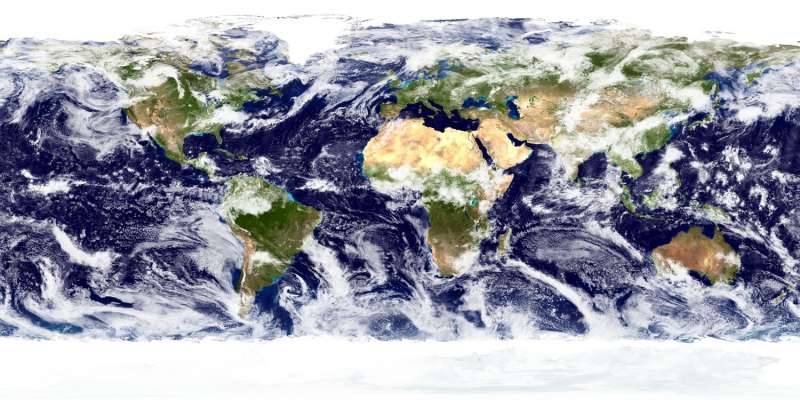Clouds are moving higher, subtropical dry zones expanding, according to satellite analysis

A Scripps Institution of Oceanography at University of California San Diego-led research team analyzing satellite cloud records has found that the cloudy storm tracks on Earth are moving toward the poles and subtropical dry zones are expanding. Cloud tops are also moving higher in the atmosphere.
The record confirms computer climate models that have predicted these changes to have taken place during the past several decades as a consequence of the accumulation of societally generated greenhouse gases in the atmosphere.
"What this paper brings to the table is the first credible demonstration that the cloud changes we expect from climate models and theory are currently happening," said study lead author Joel Norris, a climate researcher at Scripps.
With the simultaneous roles clouds play in cooling and heating the planet - reflecting solar radiation back to space but also trapping solar energy in their structures - clouds are among the most important variables in climate.
Their complex behavior has been one of the biggest areas of uncertainty for scientists attempting to understand current climate and forecast future trends.
Inconsistent satellite imaging of clouds over the decades has been a hindrance to improving scientists' understanding. Records of cloudiness from satellites originally designed to monitor weather are prone to spurious trends related to changes in satellite orbit, instrument calibration, degradation of sensors over time, and other factors.
When the researchers removed such artifacts from the record, the data exhibited large-scale patterns of cloud change between the 1980s and 2000s that are consistent with climate model predictions for that time period, including poleward retreat of mid-latitude storm tracks, expansion of subtropical dry zones, and increasing height of the highest cloud tops. These cloud changes enhance absorption of solar radiation by the earth and reduce emission of thermal radiation to space. This exacerbates global warming caused by increasing greenhouse gas concentrations.
The researchers drew from several independent corrected satellite records in their analysis. They concluded that the behavior of clouds they observed is consistent with a human-caused increase in greenhouse gas concentrations and a planet-wide recovery from two major volcanic eruptions, the 1982 El Chichón eruption in Mexico and the 1991 eruption of Mt. Pinatubo in the Philippines. Aerosols ejected from those eruptions had a net cooling effect on the planet for several years after they took place.
Barring another volcanic event of this sort, the scientists expect the cloud trends to continue in the future as the planet continues to warm due to increasing greenhouse gas concentrations.
The study, "Evidence for Climate Change in the Satellite Cloud Record," appears July 11 in the journal Nature.
More information: Evidence for Climate Change in the Satellite Cloud Record, DOI: 10.1038/nature18273
Journal information: Nature
Provided by University of California - San Diego



















